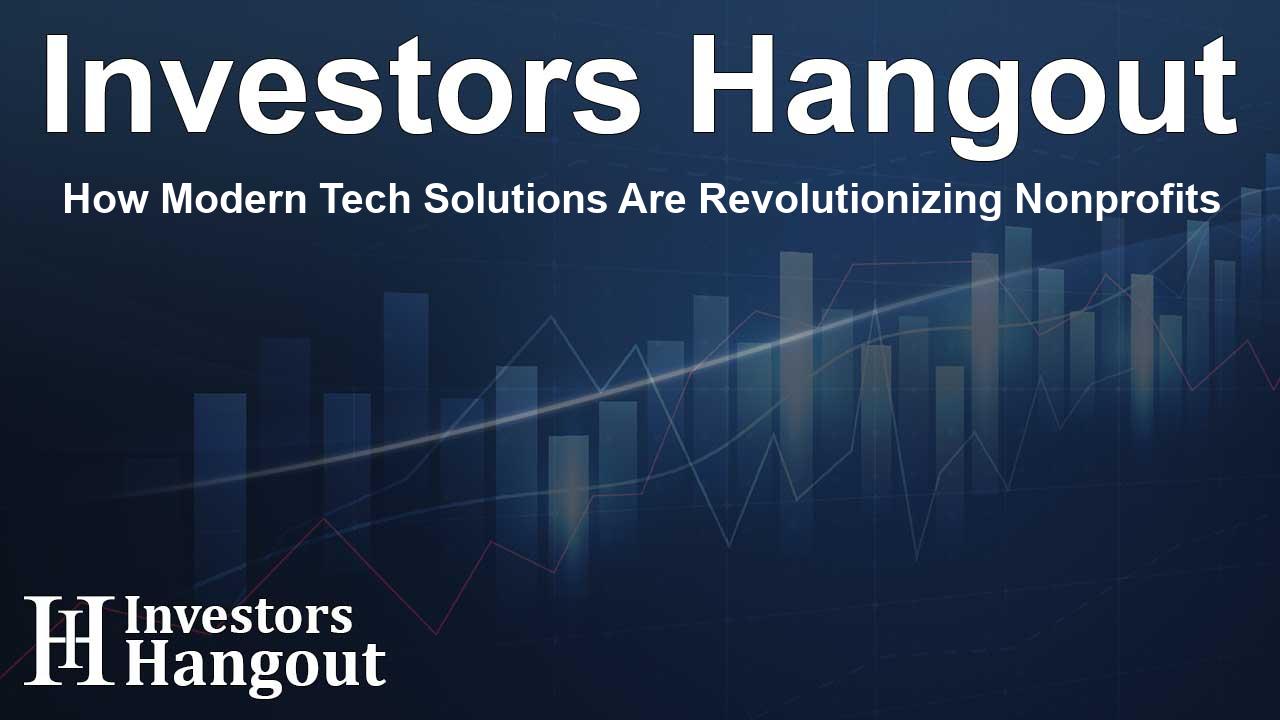How Modern Tech Solutions Are Revolutionizing Nonprofits

Understanding the Cost of Outdated Technology
Legacy donor systems are quietly sabotaging not just efficiency but also donor retention and the overall long-term impact of nonprofit organizations. As new data-driven platforms emerge, nonprofits find themselves at a critical crossroads in enhancing supporter engagement.
The Challenge of Outdated Systems
In the modern nonprofit landscape, organizations face immense pressure to maximize every dollar. Tech leaders emphasize that while many organizations maintain outdated donor management systems that appear fresh, they severely undermine operational efficiency. These 'dinosaurs' can not only obscure critical donor insights but also erode vital relationships.
A statement from Megan Newman, COO of Humanitru, underscores this reality: "A CRM isn't merely a tool—it's central to your fundraising and stewardship efforts. When your CRM falters, your entire operation suffers." The repercussions of outdated systems often go unnoticed—until they create significant hurdles.
The Hidden Costs of Legacy CRMs
Picture a scenario where your email tool, event signup, and donation processor operate independently, without synchronization. Your nonprofit is left helpless with records that are outdated, duplicated, or incomplete, which ultimately leads to confusion around donor engagement. For instance, a major donor’s contributions may not sync with their profile, creating missed opportunities for cultivating those critical relationships.
Staff often resort to tedious manual workarounds, such as exporting data and merging spreadsheets, which consumes countless hours each year. This diverted effort detracts from essential relationship-building activities, leaving teams to deal with maintenance instead of engagement. Furthermore, the monotonous interfaces of some legacy systems can significantly impact adoption rates and data quality, hampering reliable reporting and strategic growth.
Modern Data Management: A Game Changer
Today's donor engagement platforms are transforming the way organizations approach fundraising and donor relationships.
Unified Data for Better Decision Making
True integration creates seamless data flow across donations, event participation, and volunteer shifts, eliminating manual imports and offering organizations a complete view of its supporters. With this synchronization in place, nonprofits can enhance how they engage and nurture relationships.
AI-Powered Insights
Modern platforms harness the power of predictive analytics to determine which donors are likely to renew or upgrade their donations. Advanced machine learning capabilities mean that organizations can effectively prioritize outreach efforts, ensuring that they connect with lapsed donors or potential major gift prospects in a timely and personalized manner.
Automated Stewardship
Automating thank-you emails, milestone reminders, and follow-ups based on behavioral triggers enables organizations to maintain a sense of intimacy even at scale. Each action—be it a donation, event registration, or volunteer sign-up—can activate a tailored engagement strategy that saves staff time and increases impact.
Real-Time Analytics
With powerful dashboards, organizations can visualize key metrics like donor retention and giving frequency without labor-intensive reporting. This instantaneous access to data allows for swift decision-making, keeping nonprofits agile and responsive to changes in funding landscapes.
Why Upgrading Is Imperative Now
While investing in new technologies may appear daunting, it can lead to significant long-term savings and enhanced donor engagement. Advanced engagement platforms require an upfront cost but quickly demonstrate their value by:
- Reducing Labor Intensive Tasks: Automations can free teams from manual data management, allowing them to concentrate on building meaningful relationships.
- Increasing Donor Loyalty: Customized outreach and stewardship strategies lead to more frequent giving and larger donations, driving deeper connections.
- Enhancing Donor Experience: Tailored messages make supporters feel valued, addressing their unique relationship with the mission.
- Improving Strategic Insights: Reliable and clear data enable teams to identify trends and respond proactively to shifts in donor behavior.
Megan Newman highlights this paradigm shift: "What nonprofits often see as spending is genuinely investing. By adopting systems that streamline operations and increase revenue possibilities, they play a part in future-proofing their missions."
Steps to a Successful Upgrade
For nonprofits ready to enhance their efficiency, Humanitru recommends the following approach:
- Conduct a Comprehensive Audit: Review all systems used for donor management, events, and communications. Identify weaknesses in data flow and pinpoint where manual work predominates.
- Prioritize Key Workflows: Recognize where staff is spending excessive time on manual reconciliations and identify hidden journeys of donors. Automate workflows that promise immediate improvements.
- Trial and Measure: Establish the first integration across your key platforms to gauge improvements in time saved and reliability of your data. Use these results to advocate for broader implementation.
Conclusion: The Strategic Advantage of Data Centralization
At this demanding juncture for fundraising—where funding sources may be drying up—nonprofit leaders must prioritize every dollar spent. Aligning with a modern, AI-capable integrated system is no longer an optional upgrade; it’s a strategic imperative. By consolidating data and utilizing AI-driven insights, nonprofits can enhance their decision-making capabilities, forge stronger bonds with their donors, and ultimately maximize their fundraising efforts.
About Humanitru
Humanitru is dedicated to helping mission-driven organizations strengthen their fundraising efforts through innovative technology. By centralizing data and leveraging powerful automations paired with AI-driven insights, Humanitru positions nonprofits for success in their engagement and fundraising strategies.
Frequently Asked Questions
What is the impact of legacy systems on nonprofits?
Legacy systems create inefficiencies in donor management, leading to poor data quality and weakened donor relationships.
How can modern data management systems help?
Modern systems streamline integration, enhance insights, and facilitate automated stewardship initiatives for better donor engagement.
Why should nonprofits upgrade their technology now?
Upgrading technology can improve efficiency, reduce manual processes, and ultimately enhance donor retention and engagement.
What are the first steps in upgrading tech systems?
Begin by auditing existing tools, identifying high-impact workflows, and piloting integrations to improve data reliability.
What does Humanitru offer for nonprofits?
Humanitru provides comprehensive tools that help organizations centralize data and utilize AI insights to optimize fundraising and engagement practices.
About The Author
Contact Evelyn Baker privately here. Or send an email with ATTN: Evelyn Baker as the subject to contact@investorshangout.com.
About Investors Hangout
Investors Hangout is a leading online stock forum for financial discussion and learning, offering a wide range of free tools and resources. It draws in traders of all levels, who exchange market knowledge, investigate trading tactics, and keep an eye on industry developments in real time. Featuring financial articles, stock message boards, quotes, charts, company profiles, and live news updates. Through cooperative learning and a wealth of informational resources, it helps users from novices creating their first portfolios to experts honing their techniques. Join Investors Hangout today: https://investorshangout.com/
The content of this article is based on factual, publicly available information and does not represent legal, financial, or investment advice. Investors Hangout does not offer financial advice, and the author is not a licensed financial advisor. Consult a qualified advisor before making any financial or investment decisions based on this article. This article should not be considered advice to purchase, sell, or hold any securities or other investments. If any of the material provided here is inaccurate, please contact us for corrections.
